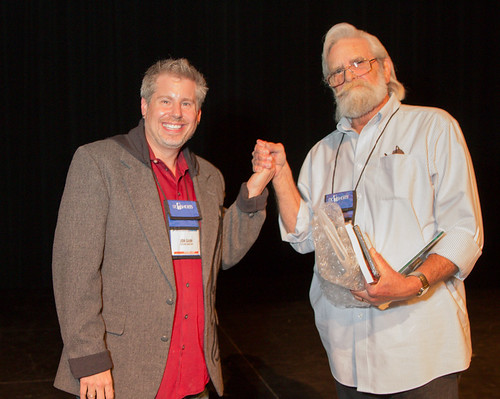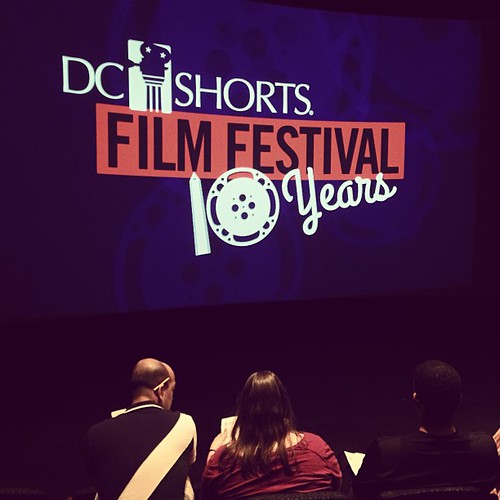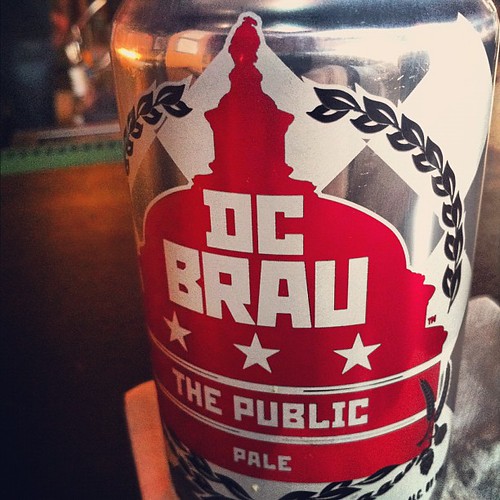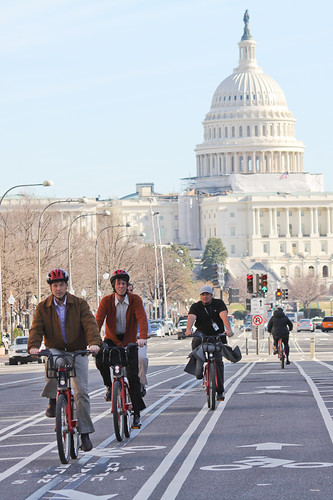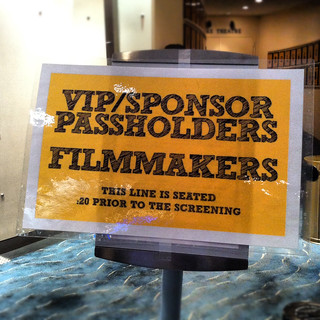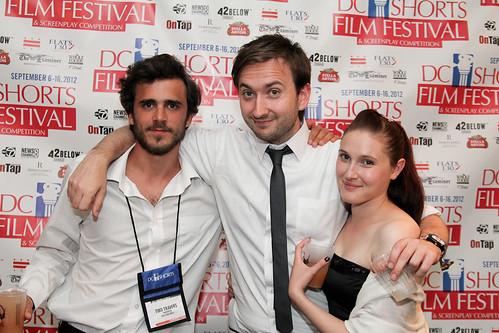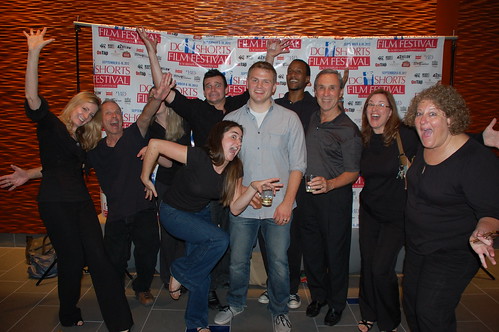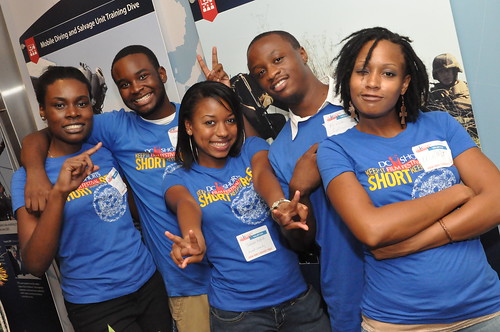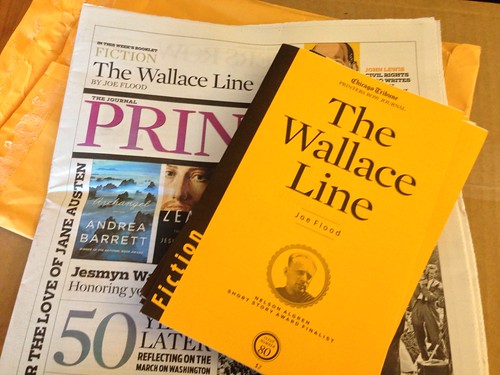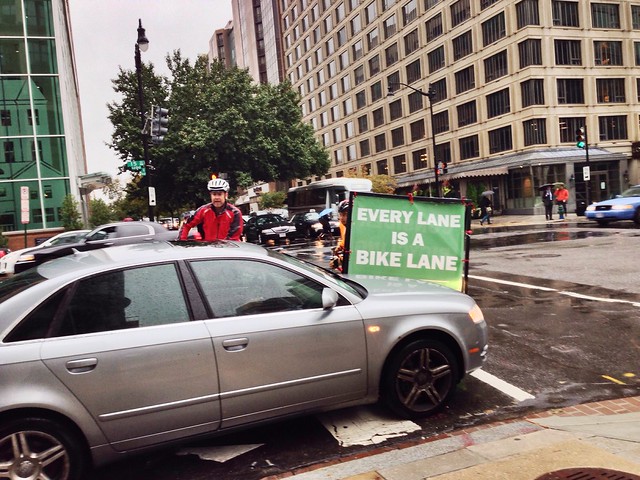
You never know what you’ll see walking around on the streets of DC.
On October 11, I was on my way to get coffee when I happened to catch this little drama. It was a rainy and miserable morning but there were still plenty of cyclists in the 15th Street Cycletrack. More than just a bike lane, this is a strip of road reserved for cyclists, with bollards and parked cars protecting them from the madness of DC traffic. Bikers can go in both directions and the Cycletrack is packed every morning with commuters – an inspiring sight.
Except at 15th and M, where the bollards have gone missing. I ride through here all the time and was about to get a picture of the danger when this Audi pulled into the Cycletrack. Then the light changed and cyclists started coming the other way.
And it was Pete Beers! He’s a Washington Area Bicyclist Association (WABA) Ambassador, charged with educating the public on the benefits of biking. As part of his outreach duties, he was riding around DC hauling the WABA “Every Lane is a Bike Lane” trailer
Pete nearly ended up on the hood of the luxury sedan. Despite this, he was polite, informing the driver that they were driving in a bike lane. It was a very civilized exchange that ended positively.
In contrast, when a cabbie made a u-turn in the Cycletrack last week, I peppered him with obscenities. “You’re a fucking idiot!” where my words, to be precise.
Maybe I should try Pete’s more Buddhist approach. Read Pete’s side of things, and his gentle approach to driver education on his blog, I Love My Commute. He also has a great Flickr feed where he obsessively documents DC-area trails, as well as his adventures in carrying large objects on bikes.
I tweeted this photo at the DC Department of Transportation. They say they will fix the problem. I hope so – it’s literally an accident waiting to happen.




